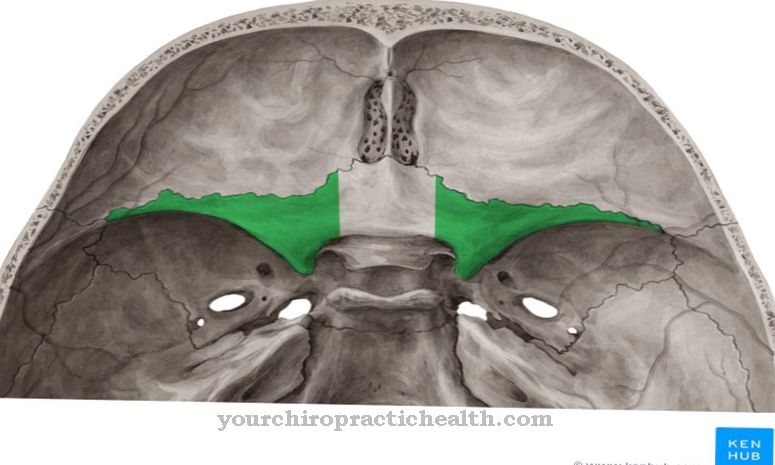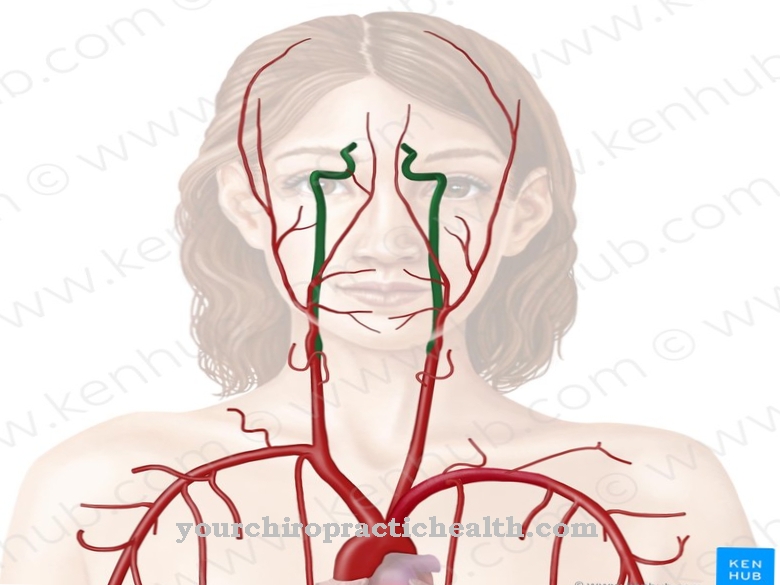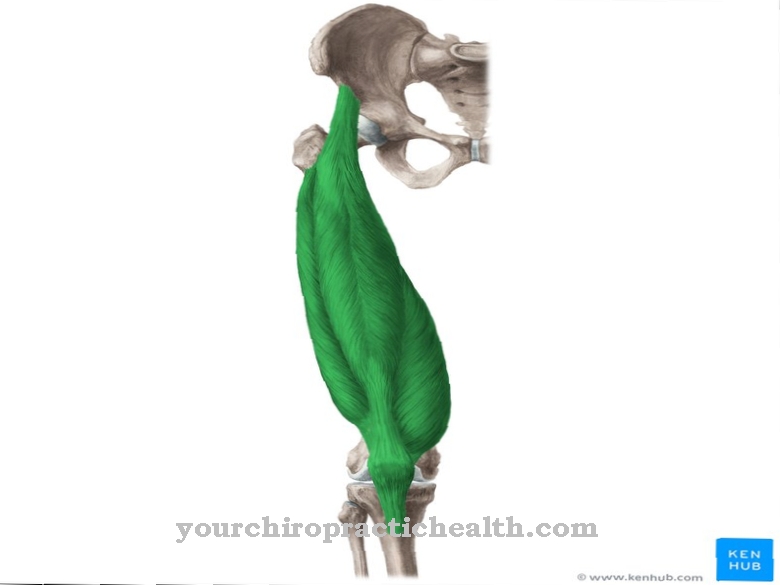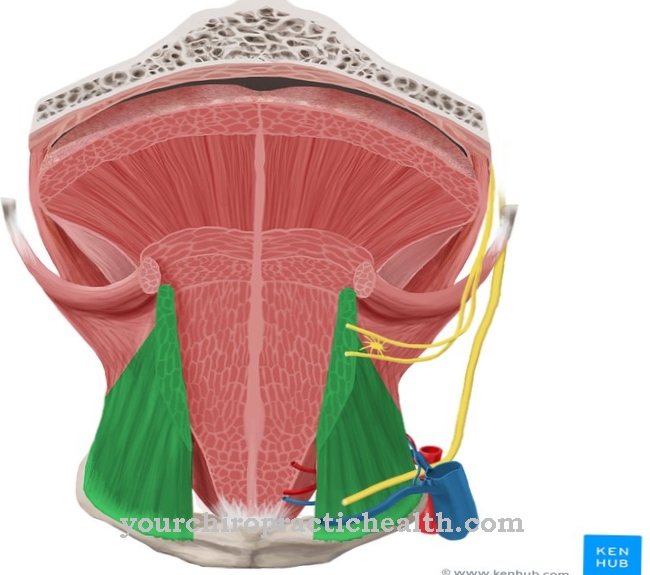Most people don't realize that Zygomatic bone is central to them. Together with the yoke process, it forms the cheek profile and thus contributes significantly to the appearance of everyone. Even so, it is known to almost everyone only in connection with the painful fracture of this bone.
What is the cheekbone?
The correct Latin name for that Zygomatic bone reads Os zygomaticum or Os jugale, it will also be in German Cheekbone and Cheekbones called. It is part of the facial skull and exists twice as paired bones. The eye socket (orbit) is laterally limited by it.The cheekbone lies below and forms the upper part of the cheek. Since it has a massive effect on the appearance, it is often processed by cosmetic surgery. Implants are often used to achieve the desired result.
That is vertical Os zygomaticum between the frontal bone (Frontal bone) and the upper jawbone (Maxilla), horizontally in front of the temporal bone (Temporal bone). There is a connection with these neighboring structures via extensions. The zygomatic bone is present in humans as well as in mammals. With birds, however, it is with the Os quadrato jugale grown together. This connection forms a kind of rod, the thrust of which can move the upper jaw upwards.
Anatomy & structure
The cheekbone consists of two plates: the orbital plate (Lamina orbitalis) and the cheek plate (Lamina malaris).
They form the body of the bone and offer space for three surfaces.
- The orbital area (Orbital facies) is smooth and forms part of the wall and floor of the orbit. In its center there is a bone opening through which nerves run into the cheekbone.
- The cheek surface (Facies malaris or Lateral facies) has an opening through which nerves and vessels enter. In addition, the large and small zygomatic muscles begin on it. It is the part that can be felt through the cheek.
- The temple surface (Facies temporalis) is the inner surface of the Os zygomaticum.
Tasks & function
As already mentioned, the jugale is of great importance for the appearance of the cheeks and the lower lateral temples. It is also important for the statics of the skull, as it is connected to the neighboring structures and forms an essential part of the orbit. Thus the entire head is more stable and the eye is protected.
The os zygomaticum is also relevant for food intake. When biting, the chewing pressure is sometimes strong due to the molars, which is absorbed and diverted by this bone. Some facial muscles have their origin on it. With its bone openings, it also offers nerves and vessels the possibility of passage.
The cheekbone plays a special role in facial diagnosis. It forms the broadest axis in the face and is supposed to correlate with the individual's resistance. In osteopathy, however, it is believed that the lower part of the orbit is related to the small pelvis, and the jugal bone itself is related to the large pelvis.
Complaints & illnesses
The zygomatic bone is prone to injury due to its location. The most common cause of this is blunt violence, which can often occur in sports, triggered by blows or collisions. This does not always have to lead to fractures, bruises can also result. This results in severe pain and bruising. The affected area should be sufficiently cooled as quickly as possible. This type of injury heals without consequences after a week or so.
For fractures, treatment depends on whether or not there has been bone displacement. If none has taken place, conservative treatment is usually sufficient. However, due to the muscle pull acting on the damaged parts, the breakpoints keep shifting. This can lead to flattening or bumps, and adjacent structures can also be impaired, such as the eye socket, which may impair vision.
There may be bleeding in the nose and throat. In these cases the bones must be put back together by surgery. Depending on the severity of the injury, local or general anesthesia is used. Cooling the wounded area also promotes healing here. It is not uncommon for nerve injuries to occur as a result of bumps or blows, which can lead to sensory disturbances such as numbness or paralysis.
Most of the time, however, fractures heal well, sometimes a small, barely noticeable flattening remains, and infections very rarely occur after the operation. However, if the jugal bone swells without prior force, this is often the result of nerve pain and inflammation. It is often trigeminal neuralgia, a very painful irritation of the fifth cranial nerve.
But the flu or a runny nose can also lead to swelling in this area. Excessive secretion and congestion in the paranasal sinuses lead to increased pressure and the visible consequences. In any case, a visit to a doctor is urgently recommended in order to clarify the cause in a differential diagnosis and thus initiate the correct treatment.












.jpg)



.jpg)










.jpg)
